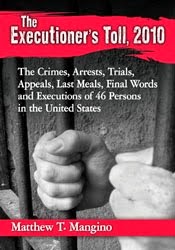Sixteen years ago President George W. Bush signed into law
the most weeping, publicly acknowledged domestic surveillance
authority in American history, according to the Cato Institute. Enacted six weeks after the 9/11 attacks, the
bill passed the Senate 98-1 and the House 357-66.
The bill had been rushed through Congress before any 9/11
inquiry had commenced, much less concluded. Congress had yet to investigate why
the attacks had succeeded in the first place. Thus, the PATRIOT Act was a
solution to a problem that remained unexamined at the time it became law.
Within three years of its enactment, two separate national
reports—one by Congress, the other by the 9/11 Commission—would conclude that
it was not a lack of data, but a lack of focused intelligence analysis and
dissemination that impeded the intelligence community from detecting the
terrorist plot. The PATRIOT Act’s constitutionally compromised, data-centric
approach was, and remains, the wrong solution for preventing future attacks.
Indeed, in the nearly 20 years since it became law, it has
become clear that none of the 160 provisions of the PATRIOT Act have
ever been shown to have stopped an attack on this country.
You will search in vain to find any reports by relevant
agency or department Inspectors General or the Government Accountability
Office, that show, based on a truly independent review of the available data
(classified or otherwise), that any PATRIOT Act authority can be
credited with stopping an attack on America. In fact, multiple examinations of such claims have found the opposite.
Worse, a number of the bill’s provisions have been used to
violate the constitutional rights of Americans, and to chill debate over the
so-called War on Terror.
There are documented reports of American Muslims curtailing or even ceasing
charitable contributions to American-based Muslim charitable organizations in
the wake of the passage of the PATRIOT Act in fear of being accused of
providing financial support to a “terrorist” organization. That fear proved
well-grounded when the “material support” provision of the PATRIOT Act was used
to prosecute the Humanitarian Law Project for engaging in
peace-making work between Kurdish rebels and the Turkish government.
The American Library Association was so alarmed by the
PATRIOT Act’s effects that at its 2005 meeting it issued a resolution condemning the law and its chilling effect
on libraries and their patrons who worried that their book checkout and online
browsing histories would be subject to disclosure to the FBI under Sec. 215 of
the law. That provision was initially labeled “the library provision” of the
PATRIOT Act precisely because the FBI sought those very type of records from a Connecticut
library in 2005. The law’s sweeping language allowed the government to demand
any “tangible things” from public or private entities involving American
citizens as long as the “tangible things” sought were “relevant” to the
collection of “foreign intelligence information” or terrorism.
But it was former NSA contractor Edward Snowden’s
amazing revelations in 2013 that helped highlight just how
out-of-control government surveillance under Sec. 215 of the PATRIOT Act had
become more than a decade after its passage and its two intervening
congressional renewals. Snowden’s disclosure that Verizon was, under FISA Court
order, providing bulk telephone metadata to federal law enforcement and
intelligence entities provoked a rhetorical uproar in the press and on Capitol
Hill.
To read more CLICK HERE







